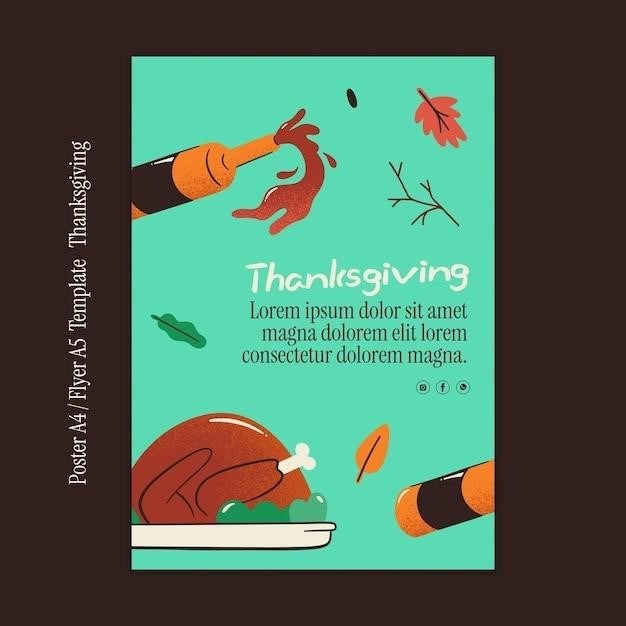
The Hunger Artist⁚ A Kafkaesque Exploration of Isolation and Meaning
Franz Kafka’s “A Hunger Artist” is a chillingly poignant short story that delves into the depths of human isolation, the search for meaning, and the paradoxical nature of artistic expression․ Through the enigmatic figure of the hunger artist, Kafka explores the theme of self-imposed isolation and the alienation that can result from a relentless pursuit of a singular goal․
The Story’s Premise⁚ A Professional Faster
Franz Kafka’s “A Hunger Artist” introduces us to a man whose life is dedicated to a peculiar and perplexing profession⁚ fasting․ The story begins by establishing the hunger artist’s unusual occupation and the public’s fascination with his ability to abstain from food for extended periods․ The hunger artist is presented as a spectacle, a figure of both awe and curiosity․ He is a performer whose talent lies in his ability to endure extreme deprivation, a feat that draws crowds eager to witness his remarkable feat of self-denial․
The story’s premise, therefore, centers around the hunger artist’s dedication to fasting as a form of art and his desire to be recognized for his unique skill․ He lives in a cage, surrounded by curious onlookers, and his ability to survive without sustenance becomes a source of both wonder and bewilderment․ Kafka’s portrayal of the hunger artist as a professional faster immediately sets the stage for a deeper exploration of themes related to identity, purpose, and the nature of artistic expression in a world that seems increasingly indifferent to his unique talent․
The Hunger Artist’s Decline⁚ From Public Figure to Obscurity
The hunger artist, once a celebrated figure, experiences a gradual decline in his popularity and recognition․ The story chronicles his journey from a celebrated performer to a forgotten relic, highlighting the ephemeral nature of fame and the fickle nature of public attention․ What was once a source of fascination and awe becomes a curiosity that slowly fades․ The hunger artist’s once-packed performances dwindle as the public’s interest wanes․ The story emphasizes the transience of fame and the inevitable passage of time that can render even the most extraordinary talents obsolete․
Kafka’s portrayal of the hunger artist’s decline is not merely a reflection of the fickleness of the public; it also suggests a deeper existential crisis․ As the hunger artist’s fame diminishes, he is left with a sense of emptiness and a profound sense of alienation․ The once-thriving arena of his performances becomes a desolate cage, symbolizing his descent into obscurity and the loss of meaning in his life․ The story underscores the precariousness of an artist’s existence, especially when their art is tied to the whims of a fickle audience․
The Paradox of the Hunger Artist
At the heart of Kafka’s “A Hunger Artist” lies a profound paradox⁚ the hunger artist’s very existence hinges on his ability to abstain from food, yet his art itself is one of self-denial and sacrifice․ The hunger artist’s performance is a spectacle of endurance, a testament to his ability to withstand the most basic human need․ He pushes himself to the limits of human capacity, transforming his body into a living testament to his dedication to his art․ However, this very act of self-denial becomes his undoing․
The story highlights the paradoxical nature of the hunger artist’s art․ While his skill is extraordinary and his endurance remarkable, the very essence of his performance lies in its emptiness․ He denies himself sustenance, yet this very act of denial becomes his sole source of meaning․ He is an artist who thrives on the absence of something, a performer whose art lies in the negation of the most fundamental human need․ This paradox underscores the elusive nature of meaning and the complexities of artistic expression․ The hunger artist’s art becomes a metaphor for the search for meaning in a world that often feels empty and devoid of purpose․
Interpretations of Kafka’s “A Hunger Artist”
Kafka’s “A Hunger Artist” has sparked numerous interpretations, each offering a unique perspective on the story’s themes and symbolism․ Critics and readers alike have grappled with the enigmatic nature of the hunger artist and his ultimate fate, exploring the complex interplay of isolation, meaning, and artistic expression․ Some interpretations focus on the hunger artist as a symbol of the alienated artist, a figure who struggles to find a place in a world that doesn’t understand or appreciate his art․
Others see the hunger artist as a metaphor for the human condition itself, a being perpetually searching for meaning and purpose in a world that often feels empty and meaningless․ The story’s ambiguous ending, where the hunger artist dies in obscurity, further fuels these interpretations, leaving readers to ponder the ultimate meaning of the hunger artist’s life and the nature of his artistic pursuit․ Ultimately, the richness of Kafka’s “A Hunger Artist” lies in its open-endedness, inviting readers to engage in their own interpretations and grapple with the complex questions the story raises about art, meaning, and the human condition․
The Artist as a Symbol of Alienation
One prominent interpretation of Kafka’s “A Hunger Artist” views the titular character as a powerful symbol of the alienated artist․ His extreme dedication to fasting, a feat that initially captivated the public, ultimately leads to his isolation and obscurity․ The hunger artist’s art, his ability to abstain from food for extended periods, becomes a source of both fascination and discomfort for the audience․ They are intrigued by his unique talent but struggle to understand its deeper significance․ This disconnect between the artist and his audience mirrors the alienation experienced by artists who strive to express profound truths in a world that often prioritizes superficiality and entertainment․
As the hunger artist’s fame wanes, he is increasingly marginalized, relegated to a cage in a traveling circus․ This symbolic confinement reflects the artist’s struggle to find a place in a world that doesn’t value his artistic vision․ He becomes a spectacle, an object of curiosity rather than a respected artist․ The hunger artist’s ultimate demise, fading away in obscurity, serves as a poignant reminder of the potential consequences of artistic isolation and the challenges artists face in a world that may not fully comprehend or appreciate their work․
The Hunger Artist’s Quest for Meaning
Beyond the spectacle of his fasting, the hunger artist’s actions can be interpreted as a desperate search for meaning in a world that seems to lack purpose․ He dedicates his life to an extreme act of self-denial, pushing his body and mind to their limits in pursuit of a deeper understanding of existence․ By choosing to abstain from food, the hunger artist seeks to transcend the basic needs of the physical body and delve into the realm of the spiritual․ His fasting becomes a form of self-imposed asceticism, a way to strip away the superficiality of life and connect with a fundamental truth․
However, his quest for meaning remains elusive․ Despite the public’s initial fascination, the hunger artist’s art is ultimately misunderstood․ People are drawn to the spectacle of his fasting but fail to grasp the profound questions he seeks to address․ This lack of understanding reinforces his sense of isolation and contributes to his ultimate decline․ The hunger artist’s story suggests that the search for meaning is often a solitary journey, one that may not always be recognized or appreciated by others․
The Role of the Audience in the Hunger Artist’s Story
The audience plays a crucial role in the hunger artist’s story, both as spectators and as agents of his decline․ Initially, they are captivated by his extraordinary ability to fast, viewing him as a spectacle and a source of entertainment․ The hunger artist thrives on this attention, finding validation in the crowds that gather to witness his self-denial․ However, as time passes, the audience’s interest wanes․ The hunger artist’s fasting becomes mundane, and the public loses its sense of awe․ The crowds dwindle, and the hunger artist finds himself increasingly isolated․
The audience’s disinterest symbolizes the fleeting nature of fame and the difficulty of maintaining relevance in a constantly changing world․ It also highlights the inherent contradiction in the hunger artist’s performance․ He seeks to transcend the material world through his fasting, yet he is ultimately dependent on the attention and approval of the very audience that he seeks to distance himself from․ This paradox underscores the tension between the artist’s desire for isolation and his need for recognition, further contributing to his sense of disillusionment and eventual demise․

Themes in “A Hunger Artist”
Kafka’s “A Hunger Artist” explores several profound themes, each intertwined with the central figure of the fasting performer․ The story delves into the nature of art and performance, raising questions about the purpose and meaning of artistic expression․ The hunger artist’s dedication to his craft, his relentless pursuit of self-denial, and his ultimate failure to connect with his audience expose the complexities of the artistic process and the inherent subjectivity of art․
The story also examines the search for identity and purpose, a universal human struggle reflected in the hunger artist’s relentless pursuit of meaning through his fasting․ His dedication to his art becomes both his salvation and his undoing, ultimately leading him to a state of profound isolation and alienation․ “A Hunger Artist” serves as a poignant exploration of the human condition, highlighting the complexities of self-definition, the search for meaning, and the struggle to find one’s place in a world that often fails to understand or appreciate individual aspirations․
The Nature of Art and Performance
Kafka’s “A Hunger Artist” presents a profound commentary on the nature of art and performance․ The hunger artist’s fasting, while seemingly a spectacle, is ultimately a form of self-expression, a dedication to a singular artistic pursuit․ His art lies in his ability to endure, to transcend the limitations of the body, and to push the boundaries of human endurance․ The story challenges the traditional notion of art as a form of entertainment or spectacle, suggesting that true art can be a deeply personal and introspective experience, even if it is not readily understood or appreciated by the audience․
The hunger artist’s isolation, his inability to connect with the public, highlights the inherent difficulty in communicating the true essence of artistic expression․ His fading popularity, the audience’s growing indifference, and the eventual replacement of his fasting cage with a panther enclosure underscore the ephemeral nature of artistic fame and the inherent struggle to sustain relevance in a constantly changing world․ “A Hunger Artist” serves as a stark reminder that art, in its purest form, is often a solitary pursuit, a journey of self-discovery that may not always find an audience or achieve widespread recognition․
The Search for Identity and Purpose
The hunger artist’s relentless pursuit of fasting serves as a metaphor for the human search for identity and purpose․ His dedication to this singular act, his unwavering commitment to pushing his body to its limits, suggests a deep-seated need to define himself, to find meaning in a world that seems to offer little in the way of inherent purpose․ His fasting becomes his identity, his sole claim to fame, and the source of his fleeting sense of belonging․ The story explores the paradoxical nature of this pursuit, the potential for self-destruction that lies within a relentless focus on a single goal, and the inherent loneliness that can accompany a life dedicated to a singular, perhaps even self-imposed, mission․
The hunger artist’s decline mirrors the disillusionment that can result from a life dedicated to a singular purpose that ultimately fails to deliver the fulfillment it promised․ His fading popularity, his eventual obscurity, and his ultimate demise in a forgotten cage underscore the fragility of identity and the dangers of clinging to a single source of meaning․ The story suggests that true fulfillment might lie not in the relentless pursuit of a single goal, but in the embrace of a more multifaceted and nuanced approach to life, one that allows for growth, adaptation, and a genuine connection with others․
The Power of Isolation and Loneliness
The hunger artist’s story is a profound exploration of the devastating effects of isolation and loneliness․ His self-imposed fasting, while initially captivating the public, ultimately isolates him from the world․ The more he pushes his body to its limits, the more he distances himself from the human experience, becoming a spectacle rather than a participant in life․ His cage, a symbol of both his commitment to his art and his confinement, becomes a physical manifestation of his growing isolation․ The story evokes a sense of profound loneliness, a sense of being utterly alone in a world that has lost interest in the artist’s unique pursuit․
The indifference of the audience, their gradual loss of fascination with his fasting, contributes to the artist’s growing sense of isolation․ The public, initially captivated by the spectacle, eventually turns away, leaving the artist alone in his cage, a testament to the fleeting nature of public interest and the potential for isolation even amidst the crowd․ The story serves as a stark reminder of the dangers of self-imposed isolation, the potential for loneliness even within a community, and the importance of human connection in navigating the complexities of life․
The Lasting Impact of “A Hunger Artist”
“A Hunger Artist” has left an indelible mark on literary and artistic discourse, resonating with readers and artists for decades․ Its themes of isolation, the pursuit of meaning, and the paradoxical nature of art continue to be relevant in contemporary culture․ Kafka’s exploration of alienation and the artist’s struggle for recognition has captivated readers and inspired interpretations across various fields, from literature and art to philosophy and psychology․
The story’s enduring power lies in its ability to transcend its historical context and speak to universal human experiences․ The hunger artist, a figure of both fascination and despair, becomes a powerful symbol of the human condition, reminding us of the complexities of self-expression, the pursuit of meaning, and the challenges of finding our place in a world that often fails to understand our unique endeavors․ “A Hunger Artist” continues to be a poignant reminder of the importance of human connection and the search for meaning in a world that can sometimes feel indifferent to our individual struggles․
Kafka’s Legacy⁚ Influence on Literature and Art
Franz Kafka’s influence on literature and art is undeniable, and “A Hunger Artist” exemplifies his enduring impact․ His works, characterized by their surrealism, existential themes, and exploration of alienation, have profoundly shaped modern literature and artistic expression․ The story’s haunting imagery, its exploration of the human condition, and its exploration of the artist’s struggle for recognition have resonated with writers, artists, and thinkers for generations․
Kafka’s influence can be seen in the works of numerous writers, including Gabriel Garcia Marquez, Haruki Murakami, and Samuel Beckett, all of whom have incorporated elements of Kafka’s surrealism, existentialism, and exploration of alienation into their own writing․ His influence extends beyond literature, inspiring artists, filmmakers, and musicians across various disciplines․ “A Hunger Artist” has been adapted for the stage, film, and opera, and its themes have been explored in countless works of art, showcasing the story’s enduring relevance and its ability to inspire creative interpretations․



